SHOWSTOPPING
Usher Hall, Edinburgh
Fri 21 Apr 2023 7.30pm

Glasgow Royal Concert Hall
Sat 22 Apr 7.30pm












































































































































































































































































































































































































Translated as ‘full of feeling’, Tchaikovsky’s Pathétique Symphony was his final masterpiece. Tonight it’s paired with his exuberant and joyous Violin Concerto, performed by acclaimed American violinist Randall Goosby. Conductor Lionel Bringuier opens proceedings with a ravishing nature-scene.
JOHANSEN Pan Op22 [16’]
TCHAIKOVSKY Violin Concerto in D major Op35 [33’]
INTERVAL
TCHAIKOVSKY Symphony No6 in B minor Op74 Pathétique [45’]
Lionel Bringuier Conductor
Randall Goosby Violin
Royal Scottish National Orchestra
USHER HALL, EDINBURGH
Fri 21 Apr 2023 7.30pm
GLASGOW ROYAL CONCERT HALL
Sat 22 Apr 7.30pm
The Glasgow performance will be recorded for the RSNO Archive. Supported by the Iain and Pamela Sinclair Legacy.
If viewing these notes at the concert, please do so considerately and not during performances. Please silence all mobile telephones and alerts, and refrain from taking photographs, without flash, until the end of each piece.
EXHILARATING RACHMANINOV PIANO CONCERTO No3
EDN FRI 28 APR
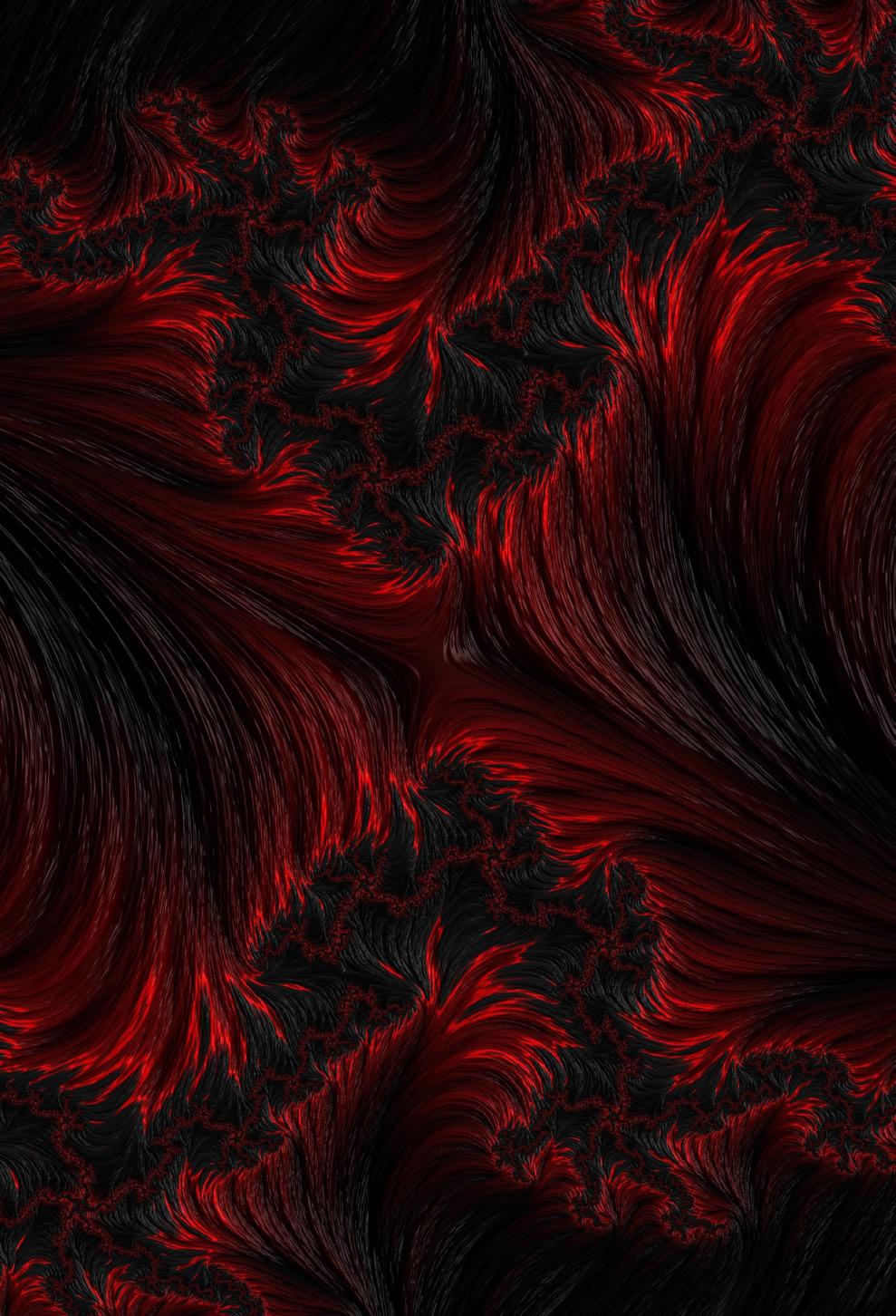
GLW SAT 29 APR
Rachmaninov Piano Concerto No3 Shostakovich Symphony No10
Thomas Søndergård Conductor Leif Ove Andsnes Piano
The
is
the Scottish Government
RSNO
supported by
rsno.org.uk
WELCOME
Unfortunately this evening’s advertised conductor, Tabita Berglund, is unable to join us. However, we are absolutely delighted and hugely grateful that Lionel Bringuier has stepped in at very short notice, and I can’t wait to hear his interpretations of two of Tchaikovsky’s undoubted masterpieces, as well as an evocation of the Norwegian landscape in the atmospheric concert-opener by David Johansen.
Welcome to this evening’s concert.
While we all found time for some muchneeded rest over Easter, our wonderful RSNO Youth Chorus also sang in unforgettable performances of Bach’s Matthew Passion alongside the Dunedin Consort, and the Orchestra and digital teams remained hard at work recording in Scotland’s Studio.
This weekend we welcome American violinist Randall Goosby, making his debut with the RSNO. It has been a joy to hear how excited Randall – a keen golfer – has been to come to Scotland and explore the country while he’s here to play with us. Here’s hoping he manages to tee off at some point!
Performing with international artists is a privilege of working in this industry, as we learn and share with people from all corners of the world. It also serves as a reminder of how lucky we are to live in Scotland, a country with such a diverse cultural offering and natural beauty.
The Orchestra has recently been working on a number of major video game soundtracks. As video game development grows rapidly as an industry in Scotland, we are pleased to be able to provide music for content that will be played all over the world. We are fortunate to have the flexibility and talent within the Orchestra to perform music by the great composers of the past 250 years, as well as music for the likes of Call of Duty and Halo. With this in mind, I would encourage you to come to our Video Games Music concerts in Edinburgh and Glasgow early next month. Conducted by games music composer Eímear Noone, there could be no better introduction to the burgeoning video games music world.
We are delighted to return to the Glasgow Royal Concert Hall this weekend, and are grateful to our loyal Glasgow audience who have been so patient as improvements have been made to the hall. It’s heartening to see the investment from Glasgow City Council helping to ensure that the RSNO continues to perform in some of the best venues around.
Alistair Mackie CHIEF EXECUTIVE
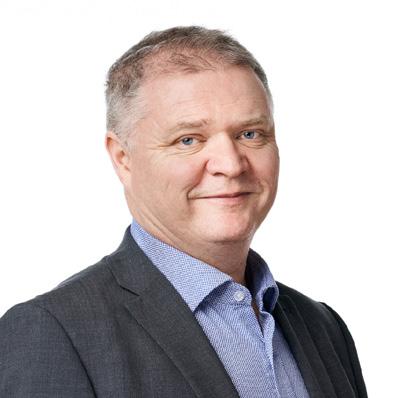
RSNO: Scotland’s National Orchestra 5
ROYAL SCOTTISH NATIONAL ORCHESTRA




































































6 Tchaikovsky’s Pathétique
1–9 10–18 19–27 28–36 37–45 46–54 55–63 64–68
RSNO: Scotland’s National Orchestra 7 ARTISTIC TEAM Thomas Søndergård 1 MUSIC DIRECTOR Neeme Järvi 2 CONDUCTOR LAUREATE Alexander Lazarev 3 CONDUCTOR EMERITUS Kellen Gray 4 ASSISTANT CONDUCTOR Stephen Doughty 5 DIRECTOR, RSNO CHORUS Patrick Barrett 6 DIRECTOR, RSNO YOUTH CHORUS FIRST VIOLIN Maya Iwabuchi LEADER 7 Sharon Roffman LEADER 8 Lena Zeliszewska 9 ASSOCIATE LEADER Tamás Fejes ASSISTANT LEADER 10 Patrick Curlett ASSISTANT PRINCIPAL 11 Caroline Parry 12 Ursula Heidecker Allen 13 Lorna Rough 14 Susannah Lowdon 15 Alan Manson 16 Elizabeth Bamping 17 Liam Lynch 18 SECOND VIOLIN Jacqueline Speirs 19 ASSOCIATE PRINCIPAL Marion Wilson ASSOCIATE PRINCIPAL 20 Nigel Mason 21 Paul Medd 22 Harriet Hunter 23 Anne Bünemann 24 Sophie Lang 25 Robin Wilson 26 Emily Nenniger 27 VIOLA Tom Dunn PRINCIPAL 28 Felix Tanner ASSOCIATE PRINCIPAL VIOLA 29 Asher Zaccardelli ASSISTANT PRINCIPAL 30 Susan Buchan SUB PRINCIPAL 31 Lisa Rourke SUB PRINCIPAL 32 Nicola McWhirter 33 Claire Dunn 34 Katherine Wren 35 Maria Trittinger 36 Francesca Hunt 37 CELLO Betsy Taylor ASSOCIATE PRINCIPAL 38 Kennedy Leitch ASSISTANT PRINCIPAL 39 Rachael Lee 40 Sarah Digger 41 Robert Anderson 42 Gunda Baranauskaitė 43 DOUBLE BASS Michael Rae ASSISTANT PRINCIPAL 44 Sally Davis 45 FLUTE Katherine Bryan PRINCIPAL 46 Helen Brew ASSOCIATE PRINCIPAL 47 Janet Richardson 48 PRINCIPAL PICCOLO OBOE Adrian Wilson PRINCIPAL 49 Peter Dykes ASSOCIATE PRINCIPAL 50 Henry Clay PRINCIPAL COR ANGLAIS 51 CLARINET Timothy Orpen 52 PRINCIPAL CLARINET Duncan Swindells 53 PRINCIPAL BASS CLARINET BASSOON David Hubbard PRINCIPAL 54 Luis Eisen ASSOCIATE PRINCIPAL 55 Paolo Dutto 56 PRINCIPAL CONTRABASSOON HORN Alison Murray ASSISTANT PRINCIPAL 57 Andrew McLean 58 ASSOCIATE PRINCIPAL David McClenaghan 59 Martin Murphy ASSISTANT PRINCIPAL 60 TRUMPET Christopher Hart PRINCIPAL 61 TROMBONE Dávur Juul Magnussen PRINCIPAL 62 Lance Green ASSOCIATE PRINCIPAL 63 Alastair Sinclair 64 PRINCIPAL BASS TROMBONE TUBA John Whitener PRINCIPAL 65 TIMPANI Paul Philbert PRINCIPAL 66 PERCUSSION Simon Lowdon PRINCIPAL 67 John Poulter ASSOCIATE PRINCIPAL 68
David Monrad Johansen (1888-1974)
PAN Op22
joined the collaborative pro-fascist government formed by Vidkun Quisling. Following the war, Johansen would be sentenced to prison with hard labour. But he lived sufficiently long to claw back some of his reputation, and by the end of his life in the 1970s was celebrated with retrospectives and birthday concerts.
If we give him the benefit of the doubt, Johansen’s conservative musical sympathies explain how he might have been caught on the wrong side of history. The composer pleaded that he joined Quisling ’s National Union party in order to ‘preserve Norwegian music culture’ He saw himself as essential in linking the National Romantic style of Grieg to a modern Norwegian aesthetic, particularly in the interwar years.
FIRST PERFORMANCE
Oslo, 4 August 1939
DURATION 16 minutes
David Monrad Johansen was born in the county of Vefsn, halfway up Norway ’s inhospitable west coast, when the country was still far from musical maturity. The figure of Edvard Grieg loomed large, and Johansen quickly fell under his spell (he became the first major biographer of the composer).
Johansen attended the rudimentary conservatoire in Oslo (then known as Christiania) before travelling to Europe to study in Berlin and Paris. Always conscientious, he would continue to seek guidance and teaching well into his adult life. In the 1930s, just before he completed his orchestral work Pan, he travelled twice to Leipzig for extended periods of study with Hermann Grabner.
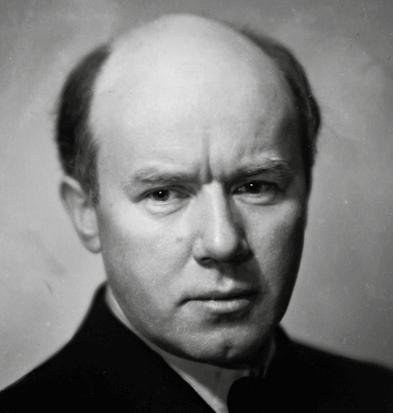
That was not the only influence Germany exerted on Johansen’s life. Upon Norway ’s occupation by the Nazis in 1940, the composer
Johansen’s music embraced elements of neoclassicism and National Romanticism but also features of modernism, particularly the Parisian kind spearheaded by Stravinsky, Debussy and others. What can look like a reactionary conservatism was probably, in the moment, more an insistence on refinement and a belief in the ‘old’ values of discipline and formal clarity. Always cautious and cleaving to ideas of learned craftsmanship, Johansen wrote his first String Quartet at the age of 82.
One of Johansen’s first works was a 1916 set of Three Songs to Texts by Knut Hamsun – Hamsun being one of Norway ’s most celebrated writers (but another figure to have hitched himself to Quisling ’s fascist party). Twenty-three years later, in 1939, the Norwegian Broadcasting Corporation commissioned Johansen to write a work marking Hamsun’s 80th birthday.
Initially, the composer planned a threemovement Suite, each movement based on a Hamsun masterpiece: Victoria, Growth of the
8 Tchaikovsky’s
Pathétique
Soil and Pan. He eventually confined his vision to one movement, and ‘ the forces of nature at work’ in the latter, a novel on the subject of a forest-dwelling former soldier ’s ill-fated romance with a wandering city girl. Johansen described his score as a tribute to Hamsun’s ‘immortal work of youth’, continuing: ‘ the music does not describe individual events [in the novel], instead attempting to express the forces of nature which are at play in Hamsun’s work and which are crucial to its development’
On at least one occasion, Johansen referred to the piece as a symphony, perhaps in relation to its loose sonata form. More obviously, this shapely work appears to unite linear counterpoint (the horizontal weaving of complementary musical lines) with a sense of the Arcadian and impressionistic. Its directness and austerity carries with it something of Hamsun’s literary style as well as Johansen’s own Nordic accent. Nature references are littered throughout the earlier part of the score, but at its climax we hear the strained conflict between the rustic and the urbane that characterises Hamsun’s novel. Pan was first performed on 4 August 1939, with Odd Grüner-Hegge conducting the orchestra of the Norwegian Broadcasting Corporation.
© Andrew Mellor
What was happening in 1939?
1 Jan Bill Hewlett and David Packard founded their technology company in Palo Alto, California, considered the birthplace of Silicon Valley
28 Mar General Franco assumed power in Madrid, the Spanish Civil War ending on 1 Apr with the surrender of Republican forces
9 Apr African American singer Marian Anderson performed for 75,000 people at Washington’s Lincoln Memorial, after having been denied access to the city’s Constitution Hall by the Daughters of the American Revolution
1 May Batman, created by Bill Finger and Bob Kane, first appeared in Detective Comics
8 Jul Pan American Airways’ Boeing 314 flying boat inaugurated the first transatlantic passenger service between the US and UK
15 Aug The Wizard of Oz, starring Judy Garland, premiered at Grauman’s Chinese Theatre in Hollywood
1 Sep Nazi Germany’s invasion of Poland heralded the start of World War II
16 Nov Notorious gangster Al Capone was released from Los Angeles’ Terminal Island low-security prison due to deteriorating health caused by syphilis
15 Dec Epic film Gone with the Wind, based on Margaret Mitchell’s 1936 novel, opened in Atlanta, Georgia
RSNO: Scotland’s National Orchestra 9
Pyotr Ilyich Tchaikovsky (1840-1893)
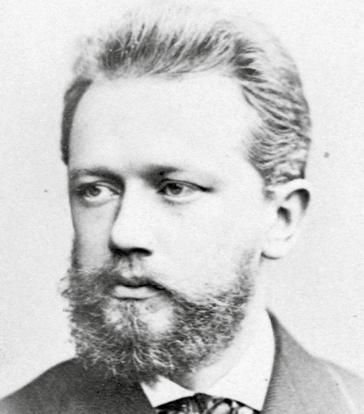
VIOLIN CONCERTO in D major Op35
In 1878, after his disastrous nine-week marriage, a suicide attempt and a severe nervous breakdown, Tchaikovsky sought peace and solace in the Swiss village of Clarens on the shores of Lake Geneva. There, inspired by his study of Lalo’s Symphonie espagnole for violin and orchestra, and by the alluring presence of the talented young violinist Iosif Kotek, he composed his Violin Concerto with astonishing ease and speed. He expressed his enthusiasm for the work in a letter to his patroness, Nadezhda von Meck:
FIRST PERFORMANCE
Vienna, 4 December 1881
DURATION 33 minutes
1. Allegro moderato
2. Canzonetta: Andante–
3. Finale: Allegro vivacissimo
For the first time in my life I have begun to work at a new piece before finishing the one in hand … I could not resist the pleasure of sketching out the Concerto, and allowed myself to be so carried away that the Piano Sonata has been set aside.
In what was surely a therapeutic process, the entire Violin Concerto was written and fully orchestrated in a mere 15 days. However, getting the work performed was considerably more problematic. The great Hungarian virtuoso Leopold Auer, to whom the work was originally dedicated, declared it unplayable, and it was not premiered until December 1881, when Adolph Brodsky and the conductor Hans Richter performed it in Vienna – to a chorus of critical derision. The highly influential critic Eduard Hanslick was famously scathing:
The violin is no longer played … it is yanked about … beaten black and blue. Friedrich Fischer once said that there existed pictures one could see stink. Tchaikovsky’s Violin Concerto brings us face to face with the revolting thought: may there not also exist musical compositions that we can hear stink?
Despite the censorious stench, Brodsky was doggedly constant in his advocacy of the work and, happily, Auer recanted his
10 Tchaikovsky’s Pathétique
earlier judgement, subsequently performing the Concerto extensively. Nowadays its inauspicious initial reception seems unthinkable. With its wealth of glorious melody and superbly crafted virtuoso writing, the Tchaikovsky Violin Concerto has long been regarded as a jewel in the violin repertoire, a worthy and distinctively Russian addition to the great violin concertos of Beethoven, Mendelssohn and Brahms.
The expansive first movement takes up half the length of the entire Concerto. It begins with a short introduction suggestive of the movement’s two main themes, and the violin emerges from the orchestral texture, announcing its presence with an elegant solo cadenza before singing the serene first main theme. Thereafter different themes emerge out of one another to exquisite effect. After a second extended orchestral passage, the soloist bursts into a breathtaking second cadenza replete with slides, double-stops, trills and vertiginous leaps (is this where the violin is being ‘beaten black and blue’?). Like much of Tchaikovsky’s music, the concluding coda could have come straight from the ballet.
The wonderfully introspective second movement Canzonetta is rich in gorgeous melodic invention. Framed by an atmospheric wind introduction, it features a dreamy and unmistakably Russian theme, with a more ardent melody forming its contrasting middle section.
The vigorous third movement finale springs into life without a pause. In the course of a brief solo cadenza, the soloist conjures up its first theme, a lithe, athletic Cossack dance. The second theme is more robust and gypsy-like, and is underpinned by drones recalling peasant bagpipes.
© Anthony Bateman
What was happening in 1881?
12 Feb Anna Pavlova, the Russian ballerina, was born
1 Mar Cunard Line’s SS Servia, the first steel transatlantic liner, was launched at Clydebank
12 Mar Andrew Watson made his Scotland debut as the world’s first Black international football player
13 Mar Alexander II of Russia was killed when a bomb was thrown at him
16 May The world’s first regular electric tram service started in Berlin
2 Jul US President James A Garfield was shot by lawyer Charles J Guiteau in Washington, DC: he died on 19 Sep
14 Jul The outlaw Billy the Kid was shot and killed by lawman Pat Garrett outside Fort Sumner, New Mexico
10 Oct Richard D’Oyly Carte’s Savoy Theatre opened in London, becoming the world’s first public building to be fully lit by electricity
25 Oct Spanish painter Pablo Picasso was born
26 Oct The Gunfight at the O.K. Corral occurred in Tombstone, Arizona; three died
RSNO: Scotland’s National Orchestra 11
Pyotr Ilyich Tchaikovsky (1840-1893)
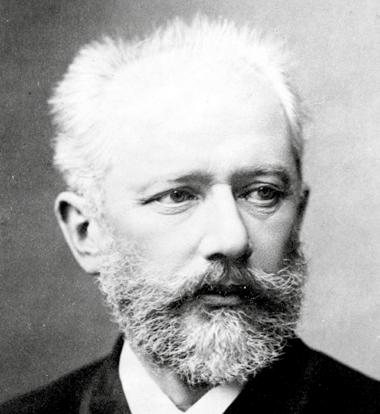
SYMPHONY No6 in B minor Op74 Pathétique
Of all swansongs in musical history, Tchaikovsky’s Pathétique Symphony has particular poignancy and mystery attached to it: just days after the work’s premiere, on 28 October 1893, its lonely and depressive composer was dead – possibly as a result of suicide. Whether or not Tchaikovsky deliberately drank the unboiled water that led him to contract fatal cholera will probably remain a matter of conjecture, as will the programme or storyline of his Sixth Symphony.
Indeed, Tchaikovsky intended the work to be a mystery. He wrote to his nephew:
FIRST PERFORMANCE
St Petersburg, 28 October 1893
DURATION 45 minutes
1. Adagio – Allegro non troppo
2. Allegro con grazia
3. Allegro molto vivace
4. Finale: Adagio lamentoso – Andante
This time a programme symphony, but with a programme that shall remain an enigma for everybody. Let them puzzle their heads over it. The work will be called simply Programme Symphony (No6). The programme is subjective through and through, and during my journey I often wept bitterly while composing it in my head.
Then, after its premiere, Tchaikovsky’s brother Modest suggested the title Pathétique ‘Capital,’ said the composer and, despite Tchaikovsky changing his mind the following day, the title remained, though its addition hardly provides much of a clue (the Russian word patetichesky means ‘passionate’ or ‘emotional’, which the work certainly is, but this applies to almost all of Tchaikovsky’s music).
Furthermore, though the genesis of the Symphony was painful, work on it during the spring and summer of 1893 brought Tchaikovsky joy. He was happy at the speed at which composing progressed and, unusually for him, was absolutely confident in the quality of his Symphony. ‘You can’t think of what a delight it is to feel that my time is not yet over,’ he wrote at the time. Given this, theories that the Pathétique is an extended musical
12 Tchaikovsky’s Pathétique
suicide note seem unconvincing, though the composer’s repressed homosexuality was doubtless a cause of much inner turmoil.
Perhaps Modest Tchaikovsky was closer to the mark when he suggested that the Symphony was essentially a work of therapy and catharsis, that it had ‘absorbed the gloomy melancholy of the preceding years, and Pyotr Ilyich for the moment experienced that lightening which is felt by the man who has confessed to a sympathetic soul everything that has long wearied and tormented him’.
Certainly, that ‘gloomy melancholy’ characterises the Adagio opening of the first movement. Emerging from the depths of the orchestra, the melodic line is a slowed-down preview of the movement’s dark-hued first main theme, a melody that forms the basis of the lively Allegro non troppo section that follows. Eventually the momentum relaxes into a slower tempo and muted strings introduce the second main melody, the sort of increasingly ardent love theme of which Tchaikovsky was supreme master. After a passionate climax, a hushed echo of the theme is played by a single clarinet (Tchaikovsky wished this to be barely audible) and the movement’s central development section bursts ferociously into life. A brass chorale quotes from the Russian Orthodox Requiem, an ominously pulsating figure is heard in the French horns, and the music builds to Tchaikovsky’s most devastating symphonic climax. Some solace comes with the return of the love theme, and in the concluding coda, over descending plucked scales in the strings, a valedictory brass chorale closes the movement in a mood of calm resignation.
Written in an unusual time signature with five beats to the bar, the waltz-intermezzo second movement has often been described as
‘limping’ in its gait, though it is actually music of rare poise and elegance (five-beat time signatures were popular with Russian opera composers of the 19th century because they fitted the rhythms of so much native Russian verse). The central trio section features an ominous, repeated timpani beat that returns just before the end of the movement, though the waltz theme has the final say.
The third movement is a delicately scored scherzo that gradually morphs ingeniously into a bold march for the full orchestra. Snatches of the march are woven into the busyness of the scherzo music until the march eventually holds full sway. The movement reaches its raucous climax in the concluding coda, though given what follows we might question how genuinely triumphant its resounding final chords really are.
Tchaikovsky had misgivings about concluding the work with a slow movement, let alone one so sombre, for in 1893 this had never been done before. The fourth movement returns to the Symphony’s dark home key of B minor, and even when this gives way to a yearning theme in the brighter D major, there is little respite from the sense of desolation. Eventually, a gentle tam-tam stroke heralds a solemn chorale for trombones and tuba. Thereafter the music seems pulled ever downwards into the gloom in which the Symphony began, the familiar pulsing rhythm now assigned to subterranean double basses, until finally it fades into silence. Whatever the work’s secret programme, this is the music of a composer at the height of his powers and a Symphony into which, in Tchaikovsky’s own words, he ‘put his soul’.
© Anthony Bateman
RSNO: Scotland’s National Orchestra 13
RANDALL GOOSBY Violin
June 2021 saw the release of Goosby ’s debut album for Decca, entitled Roots, a celebration of African American music which explores its evolution from the spiritual through to presentday compositions. Collaborating with pianist Zhu Wang, Goosby curated an album paying homage to the pioneering artists that paved the way for him and other artists of colour. It features three world-premiere recordings of music written by African American composer Florence Price, and includes works by William Grant Still and Coleridge-Taylor Perkinson, plus a newly commissioned piece by double bassist Xavier Foley.
Signed exclusively to Decca Classics in 2020 at the age of 24, American violinist Randall Goosby is acclaimed for the sensitivity and intensity of his musicianship alongside his determination to make music more inclusive and accessible, as well as bringing the music of under-represented composers to light.

Highlights of his 2022/23 season include the San Francisco Symphony/Esa-Pekka Salonen performing the Florence Price concertos, London Philharmonic Orchestra/Alpesh Chauhan, Philharmonia Orchestra/SanttuMatias Rouvali, Los Angeles Philharmonic/Dalia Stasevska, RSNO/Tabita Berglund and Dallas Symphony Orchestra/Karina Canellakis. He also makes his debuts in South Korea in recital and in Japan with the Orchestra Ensemble Kanazawa/ Wigglesworth. Summer 2022 included debuts with The Philadelphia Orchestra/Yannick NézetSéguin at the Saratoga Performing Arts Center, Concertgebouw Amsterdam with the Antwerp Symphony Orchestra/Elim Chan and in recital at the Lucerne Festival with pianist Anna Han.
Goosby is deeply passionate about inspiring and serving others through education, social engagement and outreach activities. He has worked with non-profit organisations such as the Opportunity Music Project and Concerts in Motion in New York City. In 2022/23 he hosts a residency with the Iris Collective in Memphis with Zhu Wang.
Goosby was First Prize winner in the 2018 Young Concert Artists International Auditions. In 2019 he was named the inaugural Robey Artist by Young Classical Artists Trust in partnership with Music Masters. In 2020 he became an Ambassador for Music Masters, a role that sees him mentoring and inspiring students in schools around the UK.
Randall Goosby made his debut with the Jacksonville Symphony at age nine and with the New York Philharmonic in a Young People’s Concert at Lincoln Center ’s Avery Fisher Hall at age 13. A graduate of the Juilliard School, he continues his studies there, pursuing an Artist Diploma under Itzhak Perlman and Catherine Cho. He plays the Antonio Stradivarius, Cremona, ‘ex-Strauss’, 1708, on generous loan from Samsung Foundation of Culture.
14 Tchaikovsky’s Pathétique
LIONEL BRINGUIER Conductor
Philharmoniker Karajan-Akademie, and Royal Stockholm Philharmonic Orchestra.
Over the past decade Bringuier has developed a strong relationship with many orchestras in North America, including, in the 2021/22 season, the Houston Symphony, and at the Aspen Music Festival. He has also worked in Asia, conducting the Tokyo Symphony Orchestra regularly and working with the Seoul and Malaysian philharmonics. In 2019 he returned to Australia to the Sydney Symphony Orchestra and the West Australian Symphony Orchestra.
Lionel Bringuier has travelled extensively at the invitation of symphony orchestras, chamber orchestras and opera houses, and in the 2022/23 season he continues as Artiste Associé in his hometown with Opéra de Nice. This unique appointment gives him the opportunity to curate a series of special programmes which he will also conduct, and to invite several of his closest musical partners, which this season include Simon Trpčeski, Alena Baeva and Gautier Capuçon.
Well known across Europe, most recently having served as Music Director of the TonhalleOrchester Zürich (2014-18), Bringuier has held previous posts at the Orquesta Sinfónica de Castilla y León in Valladolid, Orchestre de Bretagne and Ensemble Orchestral de Paris. The 2022/23 season features concerts with the Orchestre National de Lille, Orchestre Philharmonique Royal de Liège, Dresdner Philharmonie, Polish National Radio Symphony Orchestra, Göteborg Opera, NDR Hannover, BBC Symphony Orchestra, Le Festival de Pâques d’Aix-en-Provence with the Berliner
Bringuier regularly collaborates with Yuja Wang, with whom he has recorded the Ravel Piano Concerto for Deutsche Grammophon as part of a complete cycle of the composer’s works. Other recordings include Chopin with Nelson Freire (DG) and Saint-Saëns with Renaud Capuçon and Gautier Capuçon (Erato).
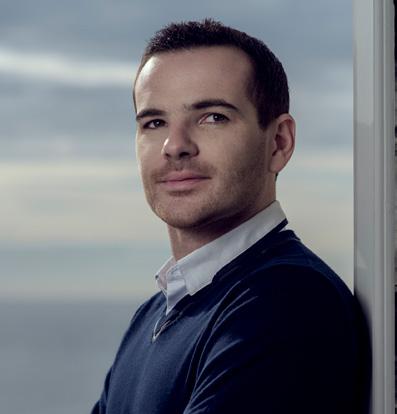
Bringuier comes from a family of musicians and studied cello and conducting at the Conservatoire de Paris, winning the prestigious International Besançon Competition for Young Conductors a year after graduating. He cares passionately about education, outreach and developing the careers of emerging conductors and soloists. In September 2020 he served on the jury of La Maestra, the first international conducting competition for women.
Bringuier was named a Chevalier de l’Ordre National du Mérite by the French government, and has been lauded with the Médaille d’or à l’unanimité avec les félicitations du jury à l’Académie Prince Rainier III de Monaco and the Médaille d’or from the City of Nice.
This evening’s advertised conductor, Tabita Berglund, is indisposed. The RSNO is delighted that Lionel Bringuier has stepped in to conduct at very short notice.
RSNO: Scotland’s National Orchestra 15
ROYAL SCOTTISH NATIONAL ORCHESTRA
Formed in 1891 as the Scottish Orchestra, the company became the Scottish National Orchestra in 1950, and was awarded Royal Patronage in 1977. The Orchestra’s artistic team is led by Danish conductor Thomas Søndergård, who was appointed RSNO Music Director in October 2018, having previously held the position of Principal Guest Conductor. Hong Kong-born conductor Elim Chan succeeds Søndergård as Principal Guest Conductor.

The RSNO performs across Scotland, including concerts in Glasgow, Edinburgh, Dundee, Aberdeen, Perth and Inverness. The Orchestra appears regularly at the Edinburgh International Festival and the BBC Proms, and has made recent tours to the USA, China and Europe.
The Orchestra is joined for choral performances by the RSNO Chorus, directed by Stephen Doughty. The RSNO Chorus evolved from a choir formed in 1843 to sing the first full performance of Handel’s Messiah in Scotland. Today, the RSNO Chorus is one of the most distinguished large symphonic choruses in Britain. The Chorus has performed nearly every work in the standard choral repertoire, along with contemporary works by composers including John Adams, Howard Shore and Sir James MacMillan.
The RSNO has a worldwide reputation for the quality of its recordings, receiving a 2020 Gramophone Classical Music Award for Chopin’s Piano Concertos (soloist: Benjamin Grosvenor), conducted by Elim Chan; two Diapason d’Or awards for Symphonic Music (Denève/Roussel 2007; Denève/Debussy 2012) and eight GRAMMY Awards nominations. Over 200 releases are available, including Thomas Søndergård conducting Strauss (Ein Heldenleben, Der Rosenkavalier Suite) and Prokofiev (Symphonies Nos1 and 5), the complete symphonies of Sibelius (Gibson), Prokofiev (Järvi), Bruckner (Tintner) and Roussel (Denève), as well as further discs championing the music of William Grant Still (Eisenberg), Xiaogang Ye (Serebrier) and Thomas Wilson (Macdonald).
The RSNO’s pioneering learning and engagement programme, Music for Life, aims to engage the people of Scotland with music across key stages of life: Early Years, Nurseries and Schools, Teenagers and Students, Families, Accessing Lives, Working Lives and Retired and Later Life. The team is committed to placing the Orchestra at the centre of Scottish communities via workshops and annual residencies.
16 Tchaikovsky’s Pathétique
ON STAGE
FIRST VIOLIN
Maya Iwabuchi
LEADER
Lena Zeliszewska
ASSOCIATE LEADER
Tamás Fejes
ASSISTANT LEADER
Evgeny Makhtin
Lorna Rough
Claudia Fuller
Ursula Heidecker Allen
Caroline Parry
Elizabeth Bamping
Susannah Lowdon
Liam Lynch
Alan Manson
Gillian Risi
Kirstin Drew
SECOND VIOLIN
Emily Davis
GUEST PRINCIPAL
Marion Wilson
Robin Wilson
Anne Bünemann
Sophie Lang
Paul Medd
Harriet Hunter
Nigel Mason
John Robinson
Colin McKee
Helena Rose
Liz Reeves
VIOLA
Tom Dunn
PRINCIPAL
Felix Tanner
Asher Zaccardelli
Beth Woodford
Katherine Wren
Maria Trittinger
Lisa Rourke
Francesca Hunt
Nicola McWhirter
Elaine Koene
CELLO
Karen Stephenson
GUEST PRINCIPAL
Betsy Taylor
Kennedy Leitch
Rachael Lee
Sarah Digger
Robert Anderson
Gunda Baranuaskaitė
Niamh Molloy
DOUBLE BASS
Alex Jones
GUEST PRINCIPAL
Michael Rae
Alexandre dos Santos
Tom Berry
Chris Sergeant
Evangelos Saklaras
FLUTE
Katherine Bryan
PRINCIPAL
June Scott
Janet Richardson
PRINCIPAL PICCOLO
OBOE
Peter Dykes
ASSOCIATE PRINCIPAL
Henry Clay
PRINCIPAL COR ANGLAIS
CLARINET
Timothy Orpen
PRINCIPAL
Duncan Swindells
PRINCIPAL BASS CLARINET
BASSOON
David Hubbard
PRINCIPAL
Luis Eisen
HORN
Jonathan Farey
GUEST PRINCIPAL
Alison Murray
Andrew McLean
Jonathan Quaintrell-Evans
Martin Murphy
TRUMPET
Christopher Hart
PRINCIPAL
Simon Bird
TROMBONE
Dávur Juul Magnussen
PRINCIPAL
Lance Green
Alastair Sinclair
PRINCIPAL BASS TROMBONE
TUBA
John Whitener
PRINCIPAL
TIMPANI
Paul Philbert
PRINCIPAL
PERCUSSION
Simon Lowdon
PRINCIPAL
John Poulter
RSNO: Scotland’s National Orchestra 17
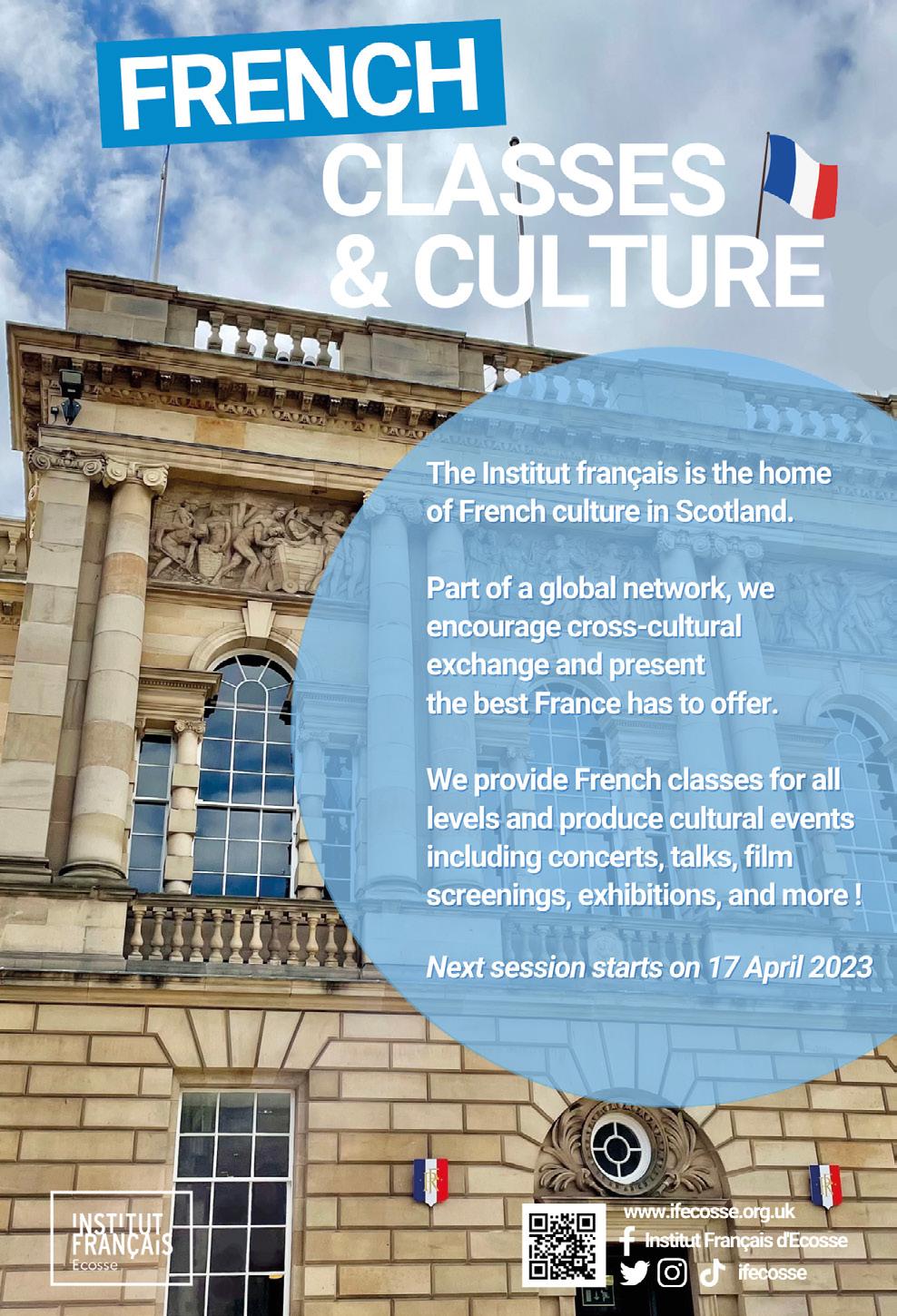
SUPPORTING THE RSNO
I am honoured and extremely proud to be Music Director of the RSNO. It is through the continued generosity of you, our friends, donors and supporters, that we can continue to achieve and realise the most ambitious goals of the Orchestra.
One of the wonders of the RSNO is how it brings high-quality music not only to concert halls, but to the wider community. From hospital settings to care homes, from our Astar app for families with newborns to our National Schools Concert Programme, our music touches so many lives in Scotland and beyond.
RSNO BENEFACTORS
RSNO Benefactors are beacons of philanthropic inspiration, providing truly transformative financial support to the Orchestra that enables us to build and deliver long-term strategic plans. Benefactors share the RSNO’s vision for orchestral music and work with us to drive
Your support is the cornerstone of all that we do, as it allows us to continually build and develop.
Thank you for being part of this wonderful Orchestra’s journey, as we adapt and grow towards a bright future.
Thomas Søndergård MUSIC DIRECTOR, RSNO
the organisation forward, helping us to realise our future plans and ambitions.
Sir Ewan and Lady Brown
Gavin & Kate Gemmell
Kat Heathcote and Iain Macneil
RSNO CONDUCTORS’ CIRCLE
The RSNO Conductors’ Circle is an inspirational group of individual supporters at the heart of the RSNO’s Individual Giving programme. Our members’ annual philanthropic gifts enable us to realise the Orchestra’s most ambitious goals. Conductors’ Circle members support inspirational concert performances for our audiences alongside transformational education programmes in communities across Scotland, via our ground-breaking initiative Music for Life.
The RSNO is very grateful for the continued support of its Conductors’ Circle:
Ardgowan Charitable Trust
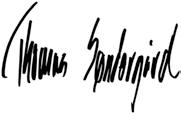
Geoff and Mary Ball
Stina Bruce Jones
Ian and Evelyn Crombie
Carol Grigor and the Trustees of Dunard Fund
Kenneth and Julia Greig
Ms Chris Grace Hartness
Bruce and Caroline Minto
David and Alix Stevenson
Eric and Karen Young
We would also like to thank those generous donors who wish to remain anonymous.
For more information on becoming a Benefactor or part of the Conductors’ Circle, please contact Jenny McNeely at jenny.mcneely@rsno.org.uk
RSNO: Scotland’s National Orchestra 19
Pathétique
RSNO PATRON PROGRAMME
CHAIR PATRON
From musical activities in schools with the musicians of the future to working in community venues across Scotland, as a Chair Patron you are enabling RSNO musicians to explore the many facets of their art and the positive impact it has on people’s lives. Supporting an individual musician puts you at the heart of the RSNO family. You’re connected directly to the musicians on stage and get to enjoy privileged behind-the-scenes access. RSNO musicians truly appreciate our Chair Patrons and enjoy developing personal relationships with our supporters.
Assistant Conductor
Kellen Gray
The Solti Foundation Chair
First Violin
Maya Iwabuchi LEADER
Sharon Roffman LEADER
Dunard Fund Chair
Tamás Fejes ASSISTANT LEADER
The Bill and Rosalind Gregson Chair
Patrick Curlett
ASSISTANT PRINCIPAL
The RSNO Circle Chair
Alan Manson
The Hugh and Linda Bruce-Watt Chair
Elizabeth Bamping
The WL and Vera Heywood Chair
Ursula Heidecker Allen
The James and Iris Miller Chair
Lorna Rough
The Hilda Munro Chair
Liam Lynch
Mr Kyle Anderson Weir
Second Violin
Marion Wilson
ASSOCIATE PRINCIPAL
The Nigel and Margot Russell Chair
Sophie Lang
The Ian and Evelyn Crombie Chair
Emily Nenniger
Mr Jamie & Kyle Anderson Weir
Viola
Tom Dunn PRINCIPAL
The Cathy & Keith MacGillivray Chair
Lisa Rourke SUB PRINCIPAL
The Meta Ramsay Chair
Francesca Hunt
The Rolf and Celia Thornqvist Chair
Cello
Pei-Jee Ng
PRINCIPAL CELLO
Mr Jamie & Kyle Anderson Weir
Betsy Taylor
ASSOCIATE PRINCIPAL
The Maxwell Armstrong Chair
Kennedy Leitch
ASSISTANT PRINCIPAL
The David and Anne Smith Chair
Rachael Lee
The Christine and Arthur Hamilton Chair
Double Bass
Michael Rae
James Wood Bequest Fund Chair
With thanks to the Gregor Forbes
John Clark Chair for its support of the RSNO Double Bass section
Flute
Katherine Bryan PRINCIPAL
The David and Anne Smith Chair
Helen Brew ASSISTANT PRINCIPAL
The Gordon Fraser Charitable Trust Chair
Oboe
Adrian Wilson PRINCIPAL
The Hedley Wright Chair
Peter Dykes
ASSOCIATE PRINCIPAL
Witherby Publishing Group
Charitable Trust Chair
Clarinet
Timothy Orpen PRINCIPAL
The Shirley Murray Chair
Cor Anglais
Henry Clay PRINCIPAL
In memory of a dear friend, Fiona H
Bassoon
David Hubbard PRINCIPAL
The James and Morag Anderson Chair
Horn
Christopher Gough PRINCIPAL
The Springbank Distillers Chair
Martin Murphy
ASSISTANT PRINCIPAL
The John Mather Trust’s Rising Star Chair
Alison Murray
ASSISTANT PRINCIPAL
Mr & Mrs Pierre and Alison Girard
David McClenaghan
The J & A Mitchell Chair
Trumpet
Christopher Hart PRINCIPAL
Ms Chris Grace Hartness
Trombone
Dávur Juul Magnussen
PRINCIPAL
The Mitchell’s Glengyle Chair
Lance Green
ASSOCIATE PRINCIPAL
The William Cadenhead Chair
Timpani
Paul Philbert
Ms Chris Grace Hartness
Percussion
John Poulter
ASSOCIATE PRINCIPAL
The Dot and Syd Taft Chair
Library and Orchestra
Assistant
Xander van Vliet
The Hilda Munro Chair
We would like to acknowledge the generous contribution of Mr Hedley Wright in supporting the RSNO Chair Patron Programme.
20 Tchaikovsky’s
LEARNING AND ENGAGEMENT PATRON
Our Learning and Engagement activity is structured around our Music for Life programme. From apps for babies to concerts and workshops for school children, and lunchtime concerts for older adults, the range of projects is vast. As a Patron, you will have access to our projects to bring you closer to the communities we serve across Scotland.
Learning and Engagement Patrons
William Brown, W.S.
Neil and Nicola Gordon
Professor Gillian Mead, FRSE
Mr Maurice Taylor CBE
RSNO Principal Oboe, Adrian Wilson
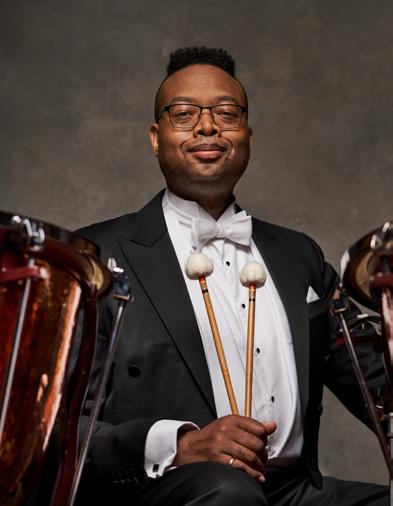
The RSNO Dundee Circle Committee
Witherby Publishing Group Charitable Trust
NEW WORKS PATRON
The RSNO is dedicated to bringing new works and outstanding new talent to audiences across Scotland. Our New Works Patrons contribute a significant legacy to orchestral music that extends beyond the RSNO, providing new music for orchestras and audiences around the world – for generations to come.
New Works Patron
Susie Thomson
We are also grateful to those who give but wish to remain anonymous.
If you would like more information or would like to discuss how you can become part of the RSNO Family of Supporters, please contact Jenny McNeely, Head of Individual Giving and Partnerships, at jenny.mcneely@rsno.org.uk
We would like to thank all those who have donated to our new Play Your Part Appeal. The generosity of our supporters at this time is deeply appreciated.
RSNO: Scotland’s National Orchestra 21
Musical Memories
Leave

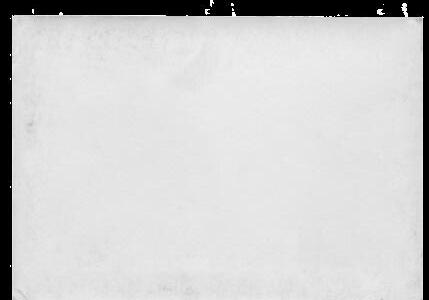
We all have special Musical Memories. It could be learning to play an instrument when you were a child, or a special piece of music that just left you breathless the first time you heard the Orchestra play it. Maybe it was seeing a soloist you had always wanted to hear, or just a great concert shared with friends. Memories such as these make music such an important part of our lives.
Leaving a gift to the RSNO in your will is the single most important way you can help us to make music and to create memories. Your legacy will support the work of the Orchestra for years to come, ensuring that we can continue to bring great music to a new generation of children, young people and adults right across Scotland. It is easy to leave a gift. After you have made provisions for family and friends, please think of the Orchestra.
Your gift is important to us and to everyone in Scotland who enjoys music. Contact your solicitor to draft a will or add a codicil to your current will.
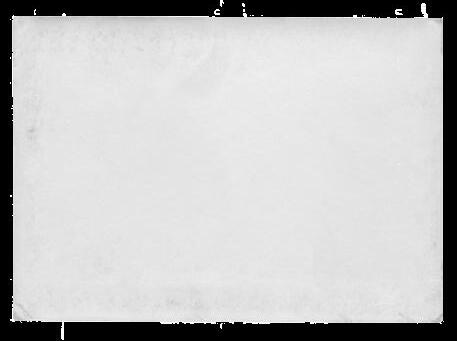
If your estate is subject to inheritance tax, a gift to a charity, such as the RSNO, is tax-free and will reduce the amount of tax payable to the Government. Please ask your solicitor for details.
For more information please visit rsno.org.uk/memories
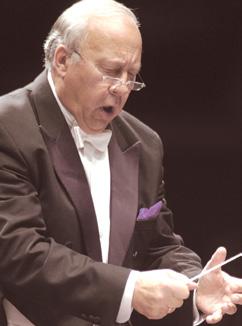
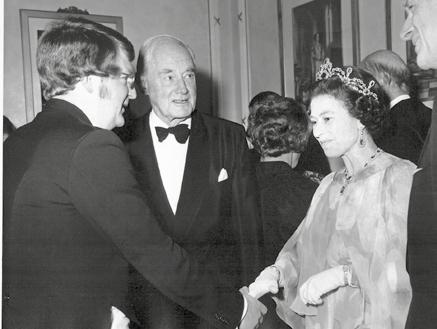
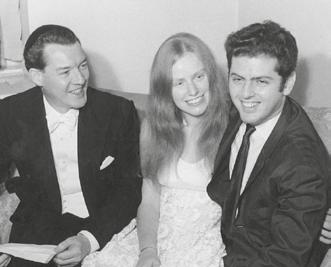
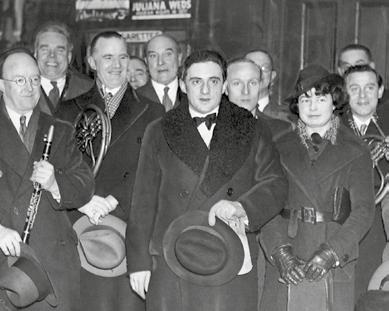
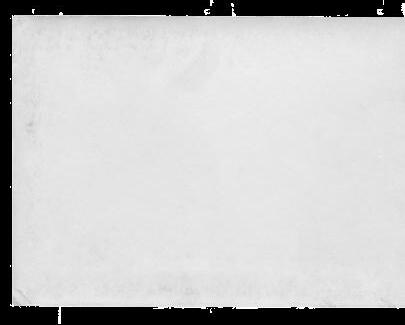
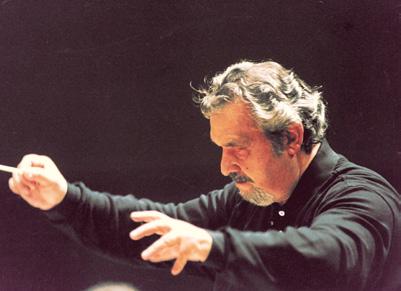
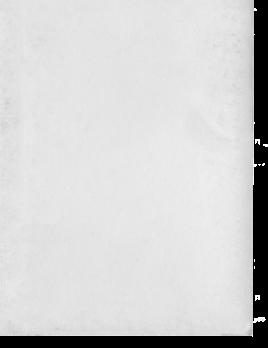
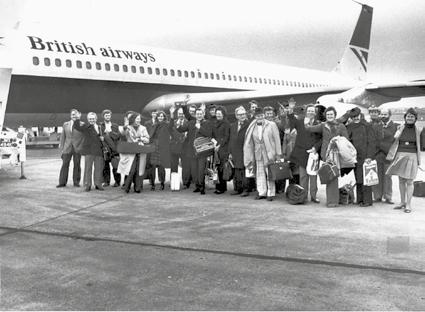
If you would like to discuss this further, please contact Torran McEwan, Individual Giving and Partnerships Officer, in the strictest confidence, at torran.mcewan@rsno.org.uk
To the many among you who have pledged to leave a gift already – thank you.
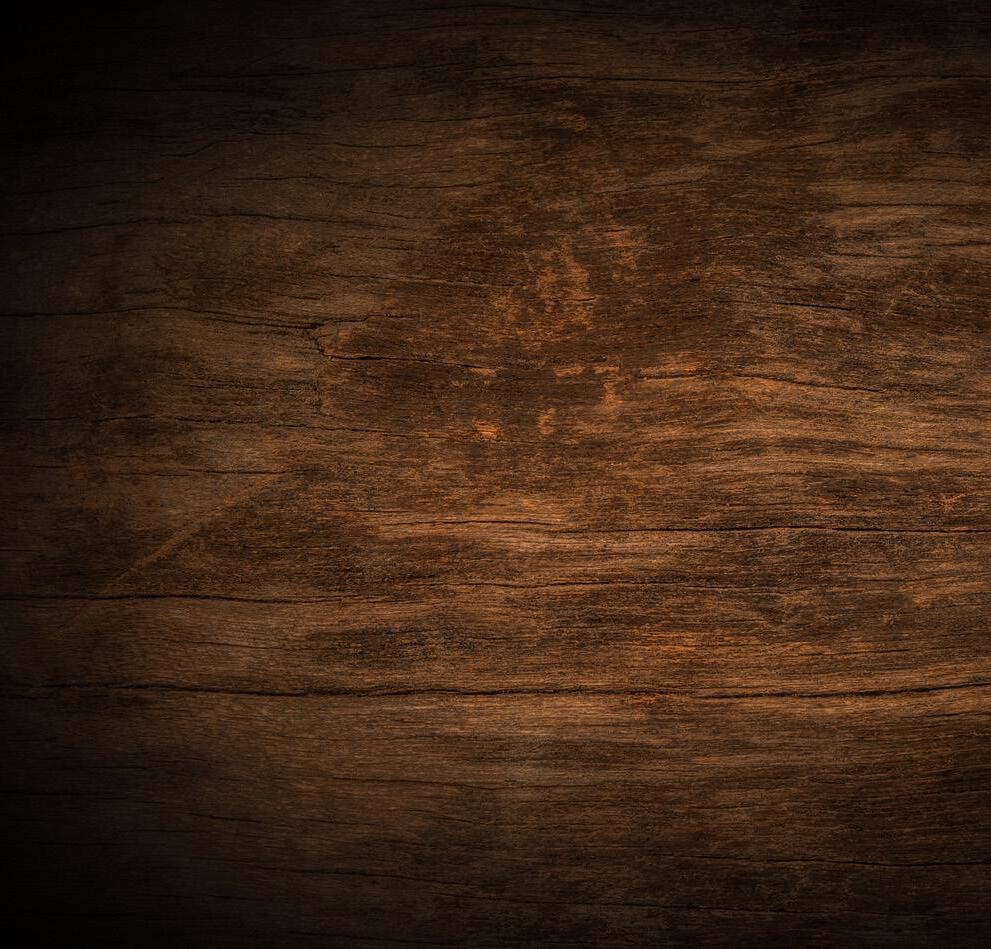

Tchaikovsky’s Pathétique
a gift to the RSNO and ensure future generations can create their own Musical Memories of the Royal Scottish National Orchestra.
CHARITABLE TRUSTS AND FOUNDATIONS
Charitable trusts and foundations have a distinguished history of supporting the RSNO, both on and off stage. From one-off donations for specific projects to multi-year funding for our flagship outreach initiatives, including the National Schools Concert Programme and Young Creatives, every grant in support of our work is truly appreciated. We are grateful to the following trusts and foundations for their generosity:
Aberdeen Endowments Trust
Alexander Moncur Trust
Alma & Leslie Wolfson Charitable Trust
Balgay Children’s Society
Boris Karloff Charitable Foundation
Brownlie Charitable Trust
Castansa Trust
CMS Charitable Trust
Cookie Matheson Charitable Trust
Cruach Trust
Cruden Foundation
David and June Gordon Memorial Trust
D’Oyly Carte Charitable Trust


Dunclay Charitable Trust
Educational Institute of Scotland
Edgar E Lawley Foundation
Ettrick Charitable Trust
Fenton Arts Trust
Forteviot Charitable Trust
Gaelic Language Promotion Trust
Gannochy Trust
Gordon Fraser Charitable Trust
Harbinson Charitable Trust
Hugh Fraser Foundation
Idlewild Trust
James Wood Bequest Fund

Jean & Roger Miller’s Charitable Trust
Jennie S Gordon Memorial Foundation
Jimmie Cairncross Charitable Trust
John Mather Charitable Trust
John Scott Trust Fund
Jones Family Charitable Trust
JTH Charitable Trust
Leach Family Charitable Trust
Leng Charitable Trust
Mary Janet King Fund
McGlashan Charitable Trust
McLay Dementia Trust
MEB Charitable Trust
Meikle Foundation
Mickel Fund
Murdoch Forrest Charitable Trust
Nancie Massey Charitable Trust
Noël Coward Foundation
Northwood Charitable Trust
P F Charitable Trust
Pump House Trust
Q Charitable Trust
Ronald Miller Foundation
R J Larg Family Trust
Russell Trust
Scops Arts Trust
Scott Davidson Charitable Trust
Solti Foundation
Souter Charitable Trust
Stevenston Charitable Trust
Sylvia Aitken Charitable Trust
Tay Charitable Trust
Thomson Charitable Trust
Thriplow Charitable Trust
Tillyloss Trust
Vaughan Williams Foundation
WA Cargill Fund

Walter Craig Charitable Trust
Walter Scott Giving Group
Walton Foundation
Wavendon Foundation
William Syson Foundation
William S Phillips Fund
W M Sword Charitable Trust
Zich Trust
We are also grateful to a number of trusts that wish to stay anonymous.
If you would like more information about our work and how you can make a difference, please contact Naomi Stewart, Head of Trusts and Projects, at naomi.stewart@rsno.org.uk
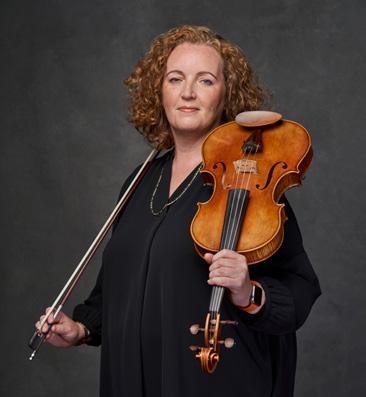
RSNO: Scotland’s National Orchestra 23
Tchaikovsky’s Pathétique

RSNO CIRCLE
The Circle is a vital part of the RSNO family. Our community of music-lovers inspire and support us. Supporting us by joining the Circle will help us to bring music to so many people, from our Learning and Engagement programmes to our brand-new digital performances. As part of our community and family, we will keep in touch with our exclusive magazine Inner Circle, our Circle member webpage and invitations to special events throughout the year.
To find out more about joining the Circle please visit rsno.org.uk/circle or get in touch with Torran McEwan, Individual Giving and Partnerships Officer, at torran.mcewan@rsno.org.uk
To all our existing Circle members, thank you. Thank you for your unwavering support that allows us to continue sharing the joy of music.
Virtuoso
Ms Catherine Y Alexander
Mrs A M Bennett
Mr Alan and Mrs Carolyn Bonnyman
Dame Susan and Mr John Bruce
Mrs Stina Bruce-Jones
Stephen and Morny Carter
Francesca and Eoghan Contini Mackie
Sir Sandy and Lady Crombie
Ms Margaret Duffy and Dr Peter Williamson
Gavin and Kate Gemmell
Dr M I and Mrs C R Gordon
Scott and Frieda Grier
Judith and David Halkerston
Iain MacNeil and Kat Heathcote
Miss A McGrory
Miss M Michie
Mr James Miller CBE
Nicholas and Alison Muntz
Meta Ramsay
Mr George Ritchie
Mr P Rollinson
Mr and Mrs W Semple
Mr Ian Taft
Claire and Mark Urquhart
Raymond and Brenda Williamson
Mr Hedley G Wright
Symphony
Mr Anderson
Mr W Berry
Mr John Brownlie
Miss L Buist
Mr and Mrs J K Burleigh
Mrs E Gibb
Mr I Gow
Mr J D Home
Mrs J Kennedy
Mrs A Lamont
Mr I C MacNicol
Professor J and Mrs S Mavor
Mrs McQueen
Mrs A McQueen
Morag Millar
Mr Miller
Mrs A Morrison
Graham and Elizabeth Morton
Mr and Mrs David Robinson
Mr D Rogerson
Mrs Ann M Stephen
Mr Alistair M and Mrs Mandy Struthers
Mr and Mrs M Whelan
Concerto
Dr K Chapman and Ms S Adam
Mr A Alstead
Mr N Barton
Miss D Blackie
Mr L Borwick
Neil and Karin Bowman
Dr C M Bronte-Stewart
Dr F L Brown
Mr and Mrs Burnside
Ms H Calvert
Mr A Campbell
Sir Graeme and Lady Catto
Mr R Cavanagh
Myk Cichla
Dr J Coleiro
Ms R Cormack
Mr and Mrs B H Cross
Christine and Jo Danbolt
Mr P Davidson
Mr J Diamond
Mr S Dunn
Mr C Ffoulkes
Mr and Mrs M Gilbert
Professor J R and Mrs C M Gray
Lord and Lady Hamilton
Mrs S Hawthorn
Richard and Linda Holden
Mr N Jack
Ms H Kay
Mr and Mrs W Kean
Mrs M King
Christine Lessels
Mr R M Love
Mr D MacPherson
Mr R G Madden
Mrs K Mair
Mr and Mrs Marwick
Mr S Marwick
Mr and Mrs G McAllister
Ms M McDougall
Mr Rod McLoughlin
Mrs B Morinaud
Mr A Morrison
Dr and Mrs D Mowle
Dr C C and Mr K R Parish
Mr I Percival
Mr and Mrs D Pirie
Ms A and Miss I Reeve
Mrs E Robertson
Miss L E Robertson
Mr D Rogerson
Ross family
Dr and Mrs G K Simpson
Mr and Mrs A Stewart
Mrs M Stirling
Mr G Stronach
Dr G R Sutherland
Mr I Szymanski
Mr and Dr Tom Thomson
Mr J B and Mrs M B Watson
Mr and Mrs D Weetman
Mrs Wigglesworth
Mr and Mrs Zuckert
Sonata
Ms S Ace
Mr K Allen
Mrs P Anderson
Ms D Baines
Mr O Balfour
Mr N Barton
Dr A D Beattie
Mrs H Benzie
Mr R Billingham
Dr and Mrs Blake
Lord and Lady Borthwick
Rev P Boylan
John Bradshaw and Shiona Mackie
Mr and Mrs Bryan
Lady J Bute
Mrs C Campbell
Miss S M Carlyon
Mr J Claxon
Lady Coulsfield
Adam and Lesley Cumming
Ms K Cunningham
Mr F Dalziel and Mrs S Walsh
Dr J K and Mrs E E Davidson
Mr and Mrs K B Dietz
24
Mrs C Donald
J Donald and L Knifton
Ms P Dow
Mrs P du Feu
Mr John Duffy
Mr and Mrs M Dunbar
Mr R M Duncan
Brigadier and Mrs C C Dunphie
Mrs E Egan
Mr R Ellis
Miss L Emslie
Mr R B Erskine
Dr E Evans
Mr D Fraser
Mr D and Mrs A Fraser
Mr D Frew
Ms J Gardner
Dr P and Dr K Gaskell
Mr W G Geddes
Mrs M Gibson
Mr D Gibson
Mr and Mrs A Gilchrist
Mrs M Gillan
Mr R M Godfrey
Mrs J K Gowans
Dr J and Mrs H Graham
Professor and Mrs A R Grieve
Mr and Mrs G Y Haig
Dr P J Harper
Mrs I Harris
Dr N Harrison
Mr and Mrs R J Hart
Mr D Hartman
Ms V Harvey
P Hayes
Dr and Mrs P Heywood
Bobby and Rhona Hogg
Ms J Hope
Mr R Horne
Mr and Mrs F Howell
Mr A Hunter
Mrs A S Hunter
Professor R N Ibbett
Ms J Incecik
Mr A Kilpatrick
Professor and Mrs E W Laing
Ms K Lang
Mr J P Lawson
Mr and Mrs J Lawson
G E Lewis
Dr D A Lunt
Mrs Lesley P Lyon
Mr and Mrs R MacCormick
Mr D MacDonald
Mr and Mrs MacGillivray
Lady Lucinda L Mackay
Dr A K and Mrs J C Martin
Mr and Mrs J Martin
Mr and Mrs D H Marwick
Ms S McArthur
Mr G McCormack
Mrs L McCormick
Mrs M McDonald
Mr M McGarvie
Dr Colin McHardy
Dr A H McKee
Mr Patrick McKeever
Mr G McKeown
Ms H L McLaren
Mrs E McLean
Mr D McNaughton
Professor Mead
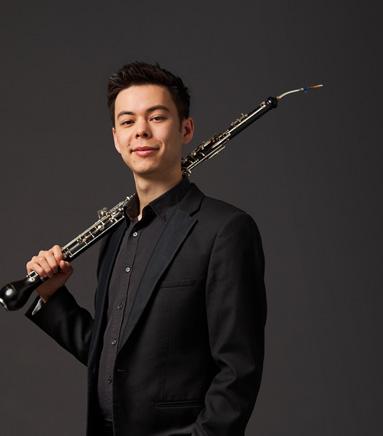
Mr and Mrs B Mellon
Mr G Millar
Mr I Mills
Mrs P Molyneaux
Mr B Moon
Mr R Morley
Mr B and Mrs C Nelson
Mr and Mrs K O’Hare
Professor Stephen Osborne and Frank Osborne
Mr and Mrs K Osborne
Dr G Osbourne
Ms S Park
Mr R Parry
Misses J and M Penman
Dr M Porteous
Mr J W Pottinger
Miss J A Raiker
Mr W Ramage
Mr M Rattray
Ms F Reith
Mrs D A Riley
Dr and Mrs D Robb
Mrs A Robertson
Mr I Robertson
Mr H and Mrs J Robson
Ms A Robson
Mrs E K Ross
David Scott
F Scott
Mrs S Scott
Mrs J Shanks
Mr J A Shipley
Dr M J and Mrs J A Shirreffs
Mr E Simmons
Dr Colin and Mrs Kathleen Sinclair
Mr M Smith
Mr M J Smith
Mrs E Smith
Mr M A Snider
Dr and Mrs B Stack
Mrs Lorna Statham
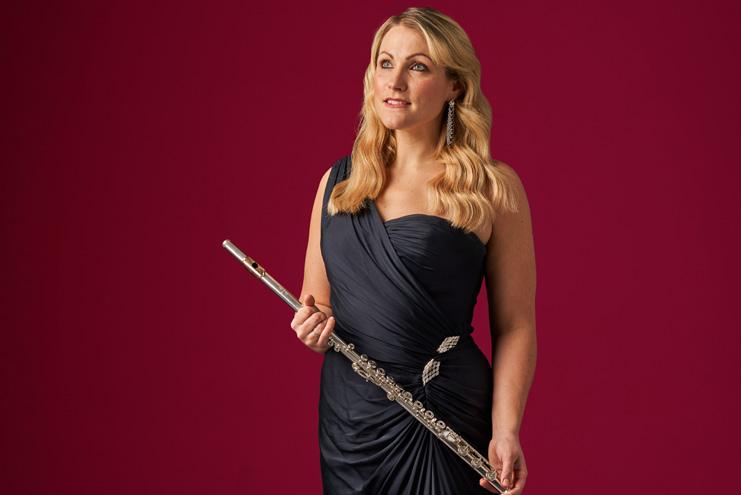
Mrs T Stevenson
Rev N and Mr R Stewart
Mrs R F Stewart
Mr and Mrs Struthers
Mr and Mrs B Tait
Dr and Mrs T Thomson
Mr C Turnbull
Dr S Tweedie
Dr Morag Ward
Mr Nelson and Mrs Barbara Waters
Mr W Watters
Dr and Mrs T Weakley
Mrs V Wells
Mr G West
Miss M Whitelaw
Dr and Mrs D T Williams
Mr D Woolgar
Mr R Young
Mr C and Mrs L Yule
Thank you to all our members of the Circle, including those who wish to remain anonymous. Every one of you makes a real difference.
A BIG THANK YOU TO OUR SUPPORTERS




PRINCIPAL


BROADCAST

CHARITY

CHAIR
If you would like more information about sponsorships, corporate partnerships or fundraising events with the RSNO, please contact Jenny McNeely, Head of Individual Giving and Partnerships, at jenny.mcneely@rsno.org.uk
26 Tchaikovsky’s Pathétique
PARTNERS Alzheimer Scotland • Balhousie Care Group • Black Lives in Music • Child and Adolescent Mental Health Services • Children’s Classic Concerts Children’s Hospices Across Scotland • Dunedin Consort • Education Scotland • Gig Buddies • Glasgow Association for Mental Health Glasgow Life • Hebrides Ensemble • Horsecross Arts • Kibble • Music Education Partnership Group • National Youth Orchestras of Scotland • One Parent Families Scotland • Ping Creates • Refuweegee • Royal Conservatoire of Scotland • Scottish Book Trust • Scottish Refugee Council Scottish Wildlife Trust • Sense Scotland • Sistema Scotland • Starcatchers • St Columba’s Hospice Care • Tayside Healthcare Arts Trust University of Dundee • University of Glasgow • V&A Dundee • Visible Fictions
PROJECT
PARTNER
TRANSPORT PARTNER
PRINCIPAL
MEDIA PARTNER
SPONSORS FUNDERS
SUPPORTERS PARTNERS Glasgow Chamber of Commerce • Institute of Directors • Scots Magazine The Scottish Council for Development & Industry • Smart Graphics
CORPORATE
PARTNER
Ecosse
ROYAL SCOTTISH NATIONAL ORCHESTRA
PATRON
Her Late Majesty The Queen
RSNO BOARD OF DIRECTORS
Elected Directors
Dame Susan Bruce DBE
CHAIR
John Heasley
HONORARY TREASURER
Kat Heathcote
Linda Holden
Neil McLennan Costa Pilavachi
CHIEF EXECUTIVE
Alistair Mackie
Phoebe Connolly
EXECUTIVE ASSISTANT
Nicola Shephard
EXECUTIVE ASSISTANT (MATERNITY LEAVE)
CONCERTS
Dr Ingrid Bols
PLANNING OFFICER
Emma Hunter
DEPUTY ORCHESTRA MANAGER
Ewen McKay
HEAD OF ORCHESTRA MANAGEMENT
Jim O’Brien
DRIVER AND ORCHESTRA TECHNICIAN
Richard Payne
LIBRARIAN
Tammo Schuelke
HEAD OF PLANNING
Craig Swindells
HEAD OF PRODUCTIONS
Matthias Van Der Swaagh
CONCERTS ADMINISTRATOR
Xander van Vliet
LIBRARY ASSISTANT
Christine Walker
CHORUS MANAGER
LEARNING AND ENGAGEMENT
Andy Stevenson
DIRECTOR OF ENGAGEMENT
Samantha Campbell
HEAD OF ENGAGEMENT (MATERNITY LEAVE)
Chrissie Johnson
PROJECT MANAGER
David Robinson
Gurjit Singh Lalli
Jane Wood
Player Directors
Helen Brew
David Hubbard
Dávur Juul Magnussen
Sophie Lang
Paul Philbert
Lorna Rough
Nominated Director
Cllr Edward Thornley
THE CITY OF EDINBURGH COUNCIL
Rosie Kenneally
LEAD PROJECT MANAGER
Rachel O’Connor
CREATIVE ASSISTANT
Rachel Pyke
PROJECT MANAGER
EXTERNAL RELATIONS
Dr Jane Donald
DIRECTOR OF EXTERNAL RELATIONS
Lisa Ballantyne
PARTNERSHIPS OFFICER
Ian Brooke
PROGRAMMES EDITOR
Rosie Clark
EXTERNAL RELATIONS ADMINISTRATOR
Jessica Cowley
MARKETING MANAGER
Carol Fleming
HEAD OF MARKETING
Constance Fraser
COMMUNICATIONS AND MARKETING OFFICER
Torran McEwan
INDIVIDUAL GIVING AND PARTNERSHIPS
OFFICER
Jenny McNeely
HEAD OF INDIVIDUAL GIVING AND PARTNERSHIPS
Mirienne McMillan
SALES OFFICER
Graham Ramage
GRAPHICS AND NEW MEDIA DESIGNER

Kirsten Reid
TRUSTS AND PROJECTS COORDINATOR
Dr Naomi Stewart
HEAD OF TRUSTS AND PROJECTS
Sam Stone
INFORMATION SERVICES MANAGER
Youth Advisory Board
Nina Doig
Erin Findlay
Beth Peat
Annie Unieng
Company Secretary
Gordon Murray
RSNO COUNCIL
Baroness Ramsay of Cartvale
CHAIR
Ms Ruth Wishart
FINANCE AND CORPORATE SERVICES
Angela Moreland
CHIEF OPERATING OFFICER
Abby Dennison
FINANCE ADMINISTRATOR
Alice Gibson
FINANCE ADMINISTRATOR
Ted Howie
FACILITIES COORDINATOR
Lorimer Macandrew
VIDEO PRODUCER
Sam McErlean
ASSISTANT SOUND ENGINEER
Irene McPhail
ACCOUNTS AND PAYROLL ASSISTANT
Calum Mitchell
ASSISTANT VIDEO PRODUCER
Hedd Morfett-Jones
DIGITAL MANAGER
Susan Rennie
FINANCE MANAGER
Jade Wilson
FINANCE ASSISTANT
Royal Scottish National Orchestra
19 Killermont Street
Glasgow G2 3NX
T: +44 (0)141 226 3868
W: rsno.org.uk
Scottish Company No. 27809
Scottish Charity No. SC010702
RSNO: Scotland’s National Orchestra 27 Orchestra list and programme details correct at time of going to print. Contents © Copyright RSNO and named authors.
/royalscottishnationalorchestra @RSNO @rsnoofficial Youtube.com/thersno
The RSNO is one of Scotland’s National Performing Companies, supported by the Scottish Government.
Alexander Armstrong Weekdays from 9am
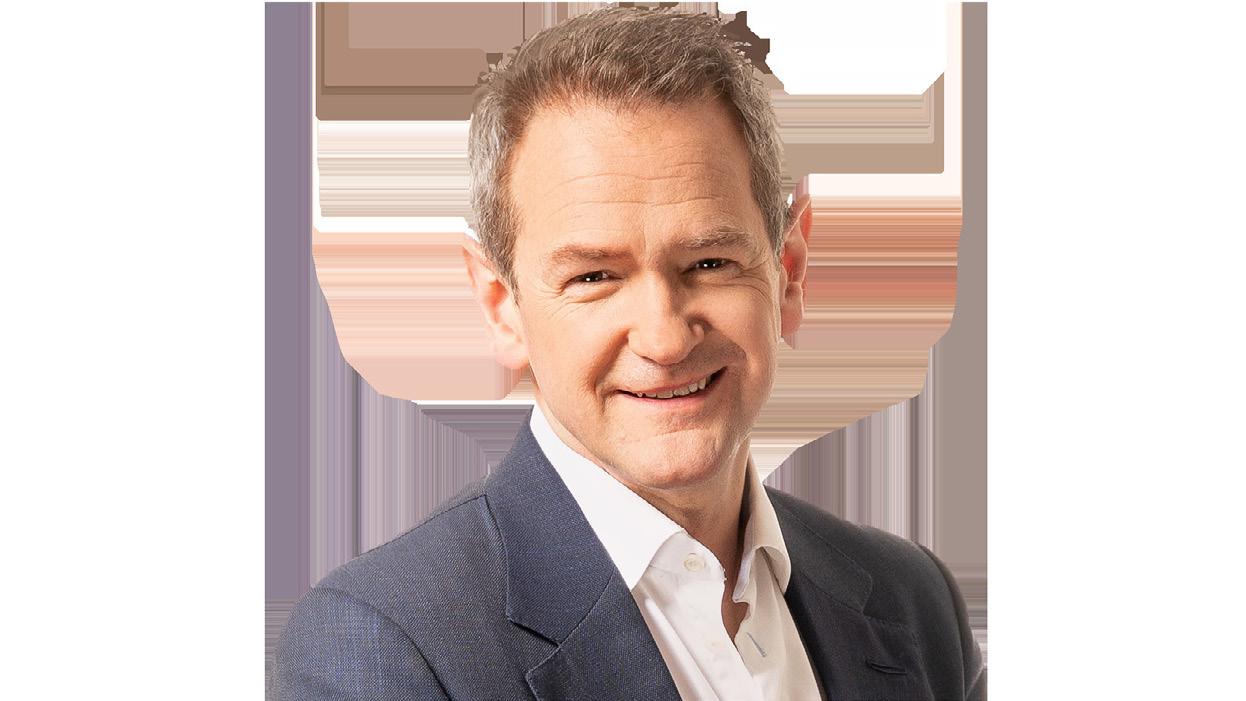

28 Tchaikovsky’s Pathétique





























































































































































































































































































































































































































































